It’s March 13, and the Toronto Maple Leafs are fresh off a blown two-goal lead against the Buffalo Sabres, falling by a score of 4-3. Sheldon Keefe has just taken the mic, and is asked about his goalie Matt Murray - who’s just surrendered four goals on 29 shots in the loss - and he says this:
"I think he's been great. The numbers look terrible, but again, here tonight, I thought he looked really good. I mean, it's four tap-ins. They're three feet or less in front of the crease."
Murray’s .862 save percentage in that game pulled down his averages for the year, and the performance continued a narrative about how often he was allowing four or more goals in a game. But in his own post-game interview, Murray noted: “I think that third period, they get a couple good looks and capitalized on them. I just got to make an extra save there, but I felt pretty good for the most part.”
Both the coach and goalie seemed to accept that Murray’s GAA and save percentage weren’t particularly relevant on that single night where the quality of the chances against were just too great.
On the offensive side of this same quality of scoring chance conversation sit the Calgary Flames, who have done a remarkable job making unestablished goaltenders look like peak-era Dominik Hasek:
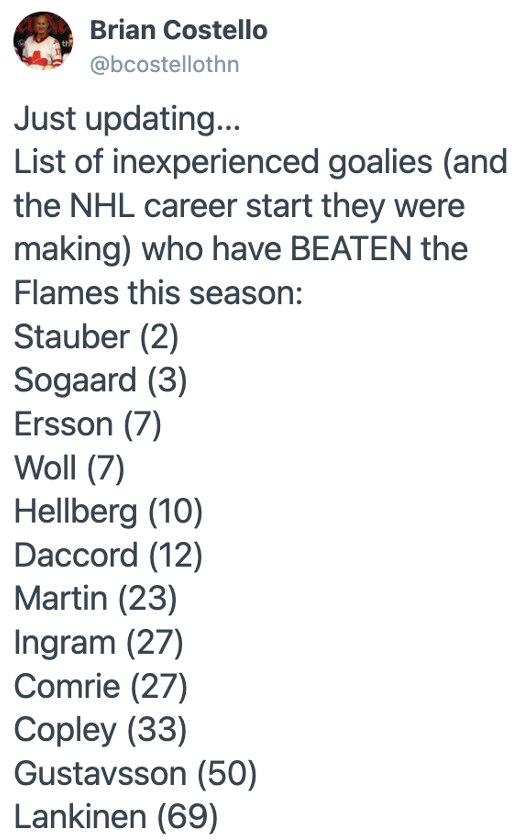
This year’s Calgary Flames are top-three in the NHL in shots, but 18th in real goals per game. They get shots, but don’t generate quality chances.
One thing access to deeper data has allowed us to recognize is the Flames are not just some unlucky team that’s due some positive breaks, but rather one that creates a lot of shots that aren’t overly dangerous. They generate in bulk from outside the slot – the most in the NHL – but are in the bottom half of the league at getting them from the inner slot.
Analytics work that aims to quantify the quality of chances created has come a long way, and as a result, “expected goals” is now a reasonably common and accepted stat in the public discourse. It evaluates several factors such as shot location and considers influences such as “rush” or “rebound” to measure the likelihood of those attempts converting into goals. As a stat “expected goals” has its imperfections (as many stats do), but over larger samples there’s useful information there.
I only point out the imperfections because expected goals is purely a proxy that relies on comparable shots from comparable spots/scenarios and how often those kinds of attempts typically go in. To focus measurements more finely, there are a bunch of factors that would require puck and player tracking…
…which we now have.
With microchips in pucks and jerseys we should eventually be able to:
• create a version of expected goals that allows us to show how a created chance is more valuable when it’s taken by a totally unmarked player, rather than one with two defenders in the immediate vicinity of the shooter.
• tell that a shot following a cross-ice laser pass is more dangerous than one off a pass that’s gently slid across the ice.
• And of course, be able to tell that when a goalie’s been juked out of his jock with a shoulder fake or no-look pass, the resulting attempt on a wide-open net is more likely to go in than one where the goalie is square to the shooter.
Some of the factors that create quality chances are repeatable skills, but we haven’t yet had the information to build them into our models.
Now we do.
Building the definitions and models is the next challenging step, but early in the process here, there’s already a ton of cool information we can tease out.
The remainder of this post will serve as an introduction to my upcoming series using data from Opportunity Analysis the latest analytic from NHL Edge IQ powered by AWS, with a look at how we plan to use it at Sportsnet. Mostly, I just want you to know what goes into the insights I’ll be sharing. For each playoff round, I’ll highlight some of this information we previously wouldn’t have had access to.
Below I’ll explain the specific factors that go into calculating Opportunity Analysis, which uses a Machine Learning model developed by AWS to analyze millions of historical and real-time data points, or factors, such as traffic or speed or goalie position to gain insights into the scoring opportunity presented by each shot. Opportunity Analysis also tells us which of these factors actually have the highest impact on the shown scoring chance.
It’s important to note that this data measures the quality of the chances created alone, and does not account for how the team executed that chance (whether they flubbed the shot or ripped it, whether it was taken by Auston Matthews or the equipment manager). We’re just measuring chances created here.
Does your favourite team create higher quality chances than the rest of the league?
This is still in its infancy, but by next season with a more complete data set, I hope to be able to regularly bring you fresh insights about the NHL at large.
Without further ado, let’s take a look at some of the factors that can help us better understand the quality of a scoring chance.
We’ll start with the obvious stuff. You need to consider:
SHOT LOCATION
Breaking news: how close a shot is to the net, and how close a shooter is to the middle of the net when they take it … those things matter. Here the measurements are simple: from the goal line out, and how far the shooter is from the middle of the ice. If I ever get fancy and use the word “meridian” instead of middle, just know that I mean the invisible line that cuts the ice in half from one end to the other.
Now it gets more fun.
GOALIE POSITIONING
A big part of creating goals is getting the giant guy who blocks the net out of position. You look right at him while you pass it elsewhere, you drop a shoulder to get him to go down, you do whatever you can to make him move. If I drop a goalie with a fake, and he slides into the corner (it was a really good fake), I could pass it to someone out by the boards and the shot they’d take from what we’ve deemed a “low percentage” part of the ice would actually be a pretty darn good scoring chance, wouldn’t you say?
These details are dialled in using the chip in the goalie’s jersey, the one in the puck, and the one in the shooting player’s sweater.
For grading chances, the NHL and AWS have considered three main things about goalie positioning: their depth, their distance, and their height.
You may not want to get bogged down in the details here. But for those more curious, these three broader themes (depth, distance, height) are evaluated like so:
Goalie Depth: Depth of the goaltender at time of release. For example, Pheonix Copley’s aggressive play here – pushing way out into the initial shot – is a big factor in what sends the projected goal rate on this chance through the roof:

You’ll be hearing me use the phrase “projected goal rate,” which is the figure the NHL and AWS has put on the overall likelihood of a chance becoming a goal.
Average Goalie Depth: Essentially looking at if the goalie’s depth in the two seconds leading up to the shot affected the odds of it going in. Here, Stuart Skinner’s reverse VH style serves him well on the initial shot, but it keeps him stuck to that depth and allows Noel Acciari space on the rebound attempt:
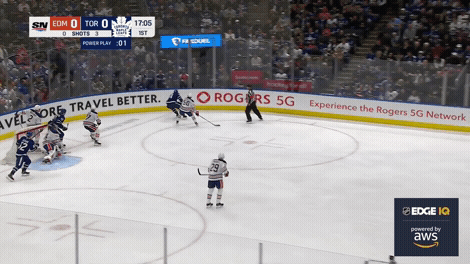
Goalie Distance to Cover: How far did a goalie have to go to make a save?
Pretty simple concept here – if a goalie gets out of position, what’s the max distance he’d have to cover to stop it? And it’s not always about some desperate goalie diving – any time you make a goalie move laterally in the lead up to an attempt, that distance they have to shuffle can be the difference. Here’s an example of what I mean:
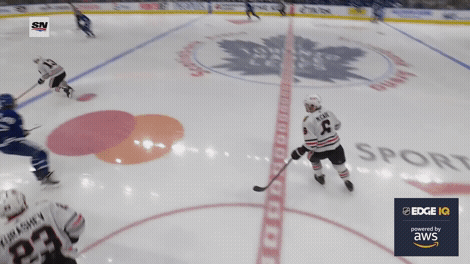
Goalie Distance Traveled: The distance a goaltender has traveled in the two seconds leading up to the release point. Sounds similar, but consider: They say the best goalies today are great skaters, and here’s an example why that’s necessary. This Leafs chance has value in part because of how much Joonas Korpisalo is forced to skate; he first has to come out to greet a possible shot, then has to move back towards the net after a slick pass is made to John Tavares.
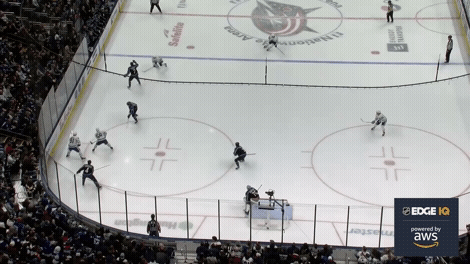
Goalie Height: This isn’t about how tall a player is. It asks “Is the goalie in their crouch, or pushing hard across, or on their belly entirely?”
Three quarters of all shots are taken when goalies are between 50-69 per cent of their standing height. Shots that come when goalies are in that sort of position have a very low projected goal rate. Once goalies sink lower than that range, they’re generally under duress and the goal rate skyrockets.
PUCK MOVEMENT
How a puck moves prior to a shot is a critical factor in understanding chance quality, so using NHL EDGE data (the chip in the puck), we’re evaluating a few things.
Puck Direction Changes: Obviously it matters to a defence and goalie if the puck changes direction in the seconds leading up to a shot. So NHL/AWS counts them: stick-handles, deflections, or whatever random alteration of the puck’s path all register (and yes, the higher the number of directional changes, the higher the likelihood of a goal). In this example, the board player goes up, down, stickhandles, seams a pass, then the puck comes right back into the slot. A pretty good chance created here:
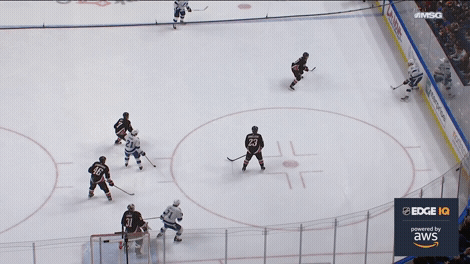
Then there’s puck speed, which you can imagine is important. How fast the puck was moving prior to an attempt affects chance quality.
Angle Discrepancy: This measures if the goalie is off-line or not as the attempt is taken, using puck and jersey tracking as well as net location. So while this example isn’t a goalie just a hair off his mark, it shows up as a prominent reason a chance grades out so wildly high – there’s essentially no goalie in the net at the time of the attempt.

Angle Discrepancy Change: A shifty play at the last second – a big pull-in ala Auston Matthews’ pre-release, or a deke that gets the goalie moving the wrong way – can have a huge impact on the likelihood of the subsequent shot going in. It essentially measures how much the goaltender is moving towards the save or away from it in the final quarter second before the attempt happens. Finally, we can measure just how bad a goalie got deked out.
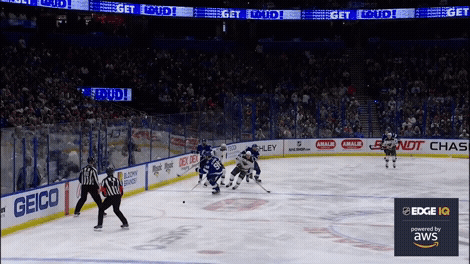
TRAFFIC
My hope with a lot of this new data is that the things coaches have preached for years will become more evident (or hey, get quashed, that would be interesting too).
One of those things is “We gotta get traffic at the net.” Goalies can confirm this gives them major headaches.
AWS is measuring traffic in a variety of ways, but mostly looking at what we’ll call the “shot cone,” and judging how many offensive and defensive players are captured within that. The cone is from the puck to the posts.
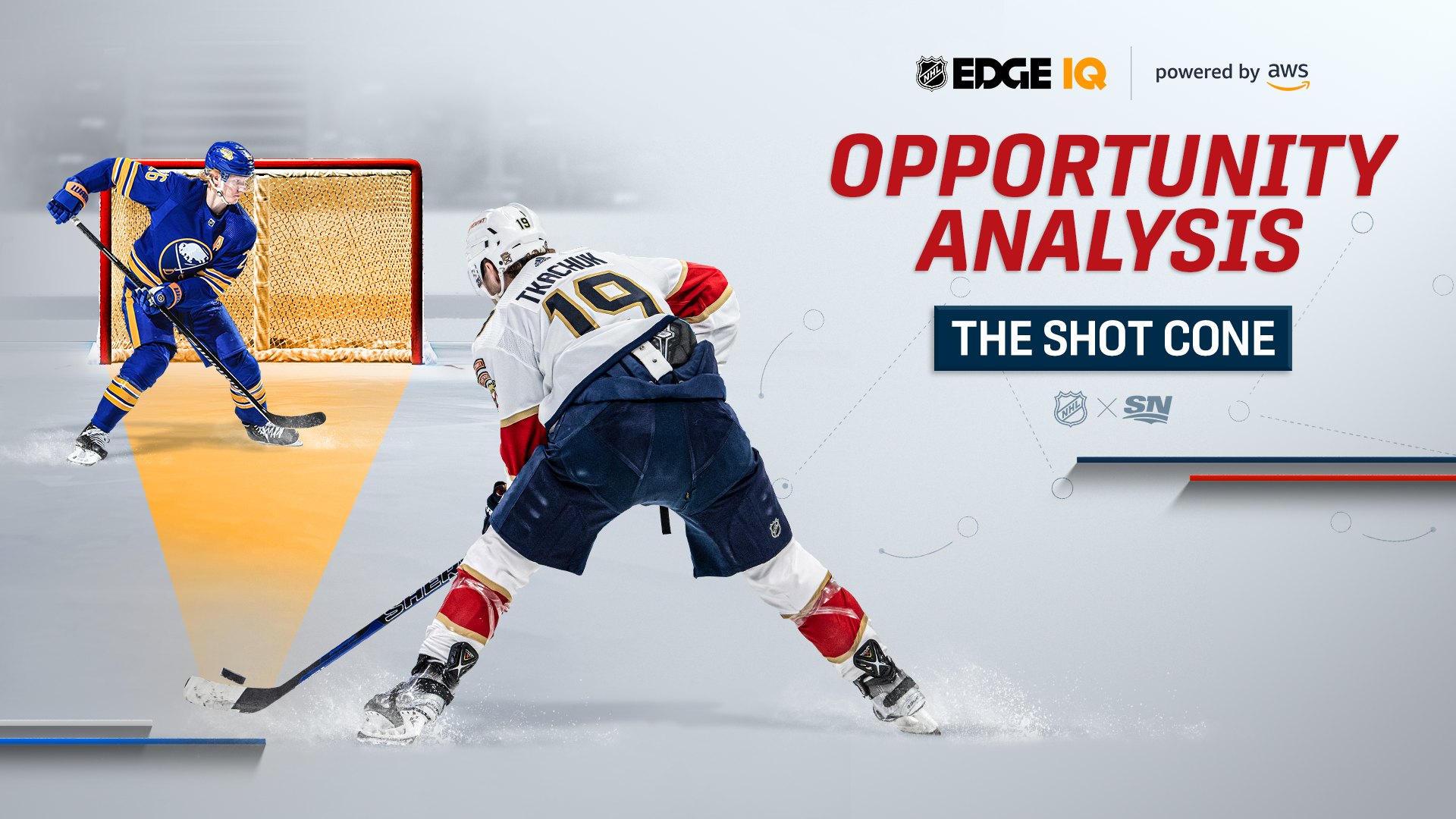
Traffic grades out higher when players are within one foot of the straight line between the puck and the chip in the goalie’s sweater (which is being called “possible vision obstruction”).
Then they’re considering how much defensive pressure a shooter is under. They can do that by looking at the six foot radius around each player's jersey chip, and seeing how much (or how many) defensive player chips are interfering with an attempt. To me, this is an area current chance data hasn’t had a chance to fairly evaluate.
Here's an example of a fairly low stress play on an unpressured shot that gets saved – like it’s a really unimpressive clip, I get that – but it has a sneaky high projected goal rate just due to the amount of bodies the goalie has to look through.

I can’t help but think of that the “Easter Epic” finish and poor Bob Mason who let in a “softie” but probably didn’t have a chance to see it through traffic.
MERIDIAN DETAILS
Did the puck cross the middle of the ice before an attempt? We know pucks that move laterally make goalies and defences change their shape, which increases the odds of a whoopsie, and thus, a goal. So the NHL and AWS are adding to that simple question by evaluating how fast the puck crosses the meridian, how many seconds after the crossing an attempt is made, and how far the meridian crossing happened from centre ice.
You can guess what has high impacts on Projected Goal Rate – fast passes followed by a quick shot, close to the net … those are some pretty good ways to juice up your odds of scoring. All of these will only be considered as a possible factor if the puck crosses the meridian in the five seconds before an attempt.
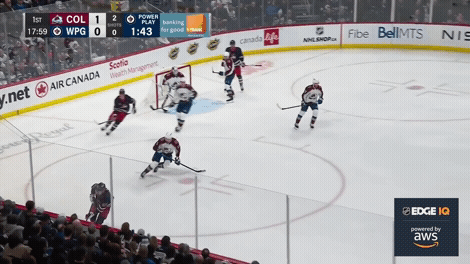
RUSH DETAILS
Rush chances are dangerous, and aren’t the same as any old shot. So using puck tracking, anything considered a rush (an attempt within five seconds of crossing the blue line) sees a bump in projected goal rate. We’ll also consider how long after crossing the blue line an attempt comes, to consider if it’s a pure speed rush or something more measured:
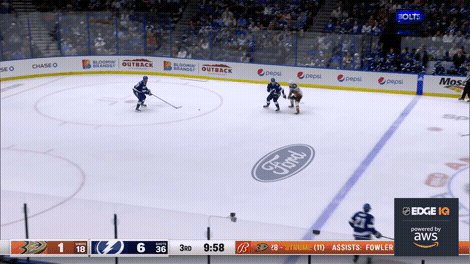
As well as blue line crossing location – did it enter way out wide, or did the puck stay in the middle of the rink?

As you can see from the above, a lot goes into defining a quality scoring chance. What we aim to do with all this new information in the weeks ahead is help us all better understand trends around the NHL, such as why a team that seems to get outshot wins a lot, the opposite, or just to share a little nugget about something a particular team or player does well that maybe we didn’t know before.
It's all called Opportunity Analysis, and next week we’ll kick things off with a takeaway from what should be an exciting Toronto versus Tampa Bay round one series.
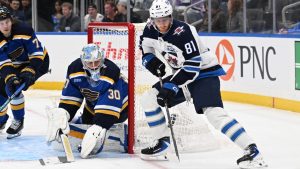

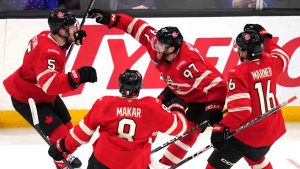
 2:51
2:51